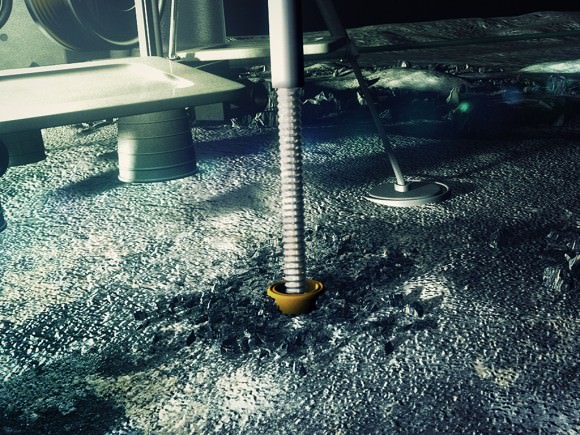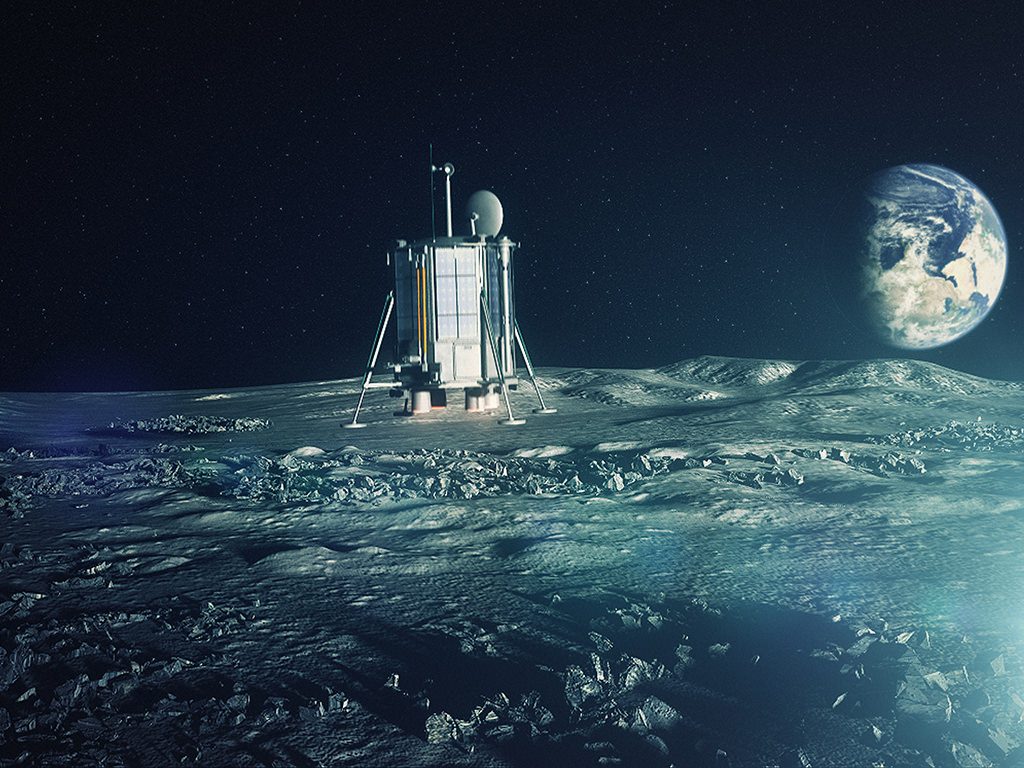Update, Dec. 18, 8:09 a.m. EST: Lunar Mission One closed its fundraising mission the night before at £672,447 ($1,052,413), short of its stretch goal of £700,000.
With just over a day to go in their crowdfunding campaign, a British group hoping to put a robotic lander on the moon in 2024 reached their fundraising goal of $932,000 (£600,000) overnight.
The money is supposed to move the project into more concrete phases after the founders spent seven years quietly developing their concept, but many of the details about the design and funding have yet to be unveiled.
“We plan to send an unmanned robotic landing module to the South Pole of the Moon – an area unexplored by previous missions,” the mission says on its Kickstarter page. “We’re going to use pioneering technology to drill down to a depth of at least 20m – 10 times deeper than has ever been drilled before – and potentially as deep as 100m.
“By doing this,” the statement adds, “we will access lunar rock dating back up to 4.5 billion years to discover the geological composition of the Moon, the ancient relationship it shares with our planet and the effects of asteroid bombardment. Ultimately, the project will improve scientific understanding of the early Solar System, the formation of our planet and the Moon, and the conditions that initiated life on Earth.”

“Stretch goals” for the organization include rewards for backers such as an e-commerce program, a massive open online course for educational purposes, a party for backers in London, and being “a leading role” in World Space Week 2015. The additional money, however, will also be used for drilling studies, putting together the science team and making a work plan.
With the money raised, the project now has the ambitious target of getting their lander on the moon by 2024. According to the schedule, the main mission contract should be awarded by 2017, design and development begins by 2018, and the final build commences in 2021.
RAL Space (which assisted with the Philae comet landing and 200 other space missions, according to the page) is serving as a technical advisor to the board. The project chair of Lunar Missions Ltd. (which is responsible for the project) is Ian Taylor, a former United Kingdom government science minister and co-chair of the parliamentary space committee.
As with other private ventures in space such as Mars One, however, Lunar Mission One is dealing with long timelines, a risky goal and a not-certain guarantee of success.

